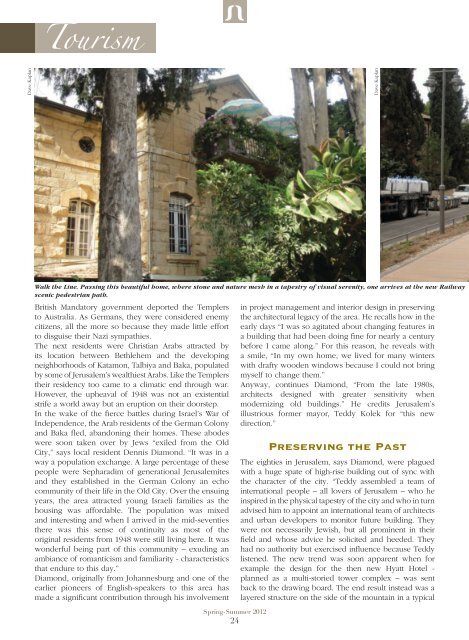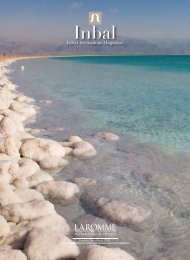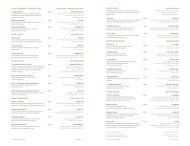download PDF - Inbal Hotel Jerusalem
download PDF - Inbal Hotel Jerusalem
download PDF - Inbal Hotel Jerusalem
- No tags were found...
Create successful ePaper yourself
Turn your PDF publications into a flip-book with our unique Google optimized e-Paper software.
TourismDave KaplanDave KaplanWalk the Line. Passing this beautiful home, where stone and nature mesh in a tapestry of visual serenity, one arrives at the new Railwayscenic pedestrian path.British Mandatory government deported the Templersto Australia. As Germans, they were considered enemycitizens, all the more so because they made little effortto disguise their Nazi sympathies.The next residents were Christian Arabs attracted byits location between Bethlehem and the developingneighborhoods of Katamon, Talbiya and Baka, populatedby some of <strong>Jerusalem</strong>’s wealthiest Arabs. Like the Templerstheir residency too came to a climatic end through war.However, the upheaval of 1948 was not an existentialstrife a world away but an eruption on their doorstep.In the wake of the fierce battles during Israel’s War ofIndependence, the Arab residents of the German Colonyand Baka fled, abandoning their homes. These abodeswere soon taken over by Jews “exiled from the OldCity,” says local resident Dennis Diamond. “It was in away a population exchange. A large percentage of thesepeople were Sepharadim of generational <strong>Jerusalem</strong>itesand they established in the German Colony an echocommunity of their life in the Old City. Over the ensuingyears, the area attracted young Israeli families as thehousing was affordable. The population was mixedand interesting and when I arrived in the mid-seventiesthere was this sense of continuity as most of theoriginal residents from 1948 were still living here. It waswonderful being part of this community – exuding anambiance of romanticism and familiarity - characteristicsthat endure to this day.”Diamond, originally from Johannesburg and one of theearlier pioneers of English-speakers to this area hasmade a significant contribution through his involvementSpring-Summer 201224in project management and interior design in preservingthe architectural legacy of the area. He recalls how in theearly days “I was so agitated about changing features ina building that had been doing fine for nearly a centurybefore I came along.” For this reason, he reveals witha smile, “In my own home, we lived for many winterswith drafty wooden windows because I could not bringmyself to change them.”Anyway, continues Diamond, “From the late 1980s,architects designed with greater sensitivity whenmodernizing old buildings.” He credits <strong>Jerusalem</strong>’sillustrious former mayor, Teddy Kolek for “this newdirection.”Preserving the PastThe eighties in <strong>Jerusalem</strong>, says Diamond, were plaguedwith a huge spate of high-rise building out of sync withthe character of the city. “Teddy assembled a team ofinternational people – all lovers of <strong>Jerusalem</strong> – who heinspired in the physical tapestry of the city and who in turnadvised him to appoint an international team of architectsand urban developers to monitor future building. Theywere not necessarily Jewish, but all prominent in theirfield and whose advice he solicited and heeded. Theyhad no authority but exercised influence because Teddylistened. The new trend was soon apparent when forexample the design for the then new Hyatt <strong>Hotel</strong> -planned as a multi-storied tower complex – was sentback to the drawing board. The end result instead was alayered structure on the side of the mountain in a typical








